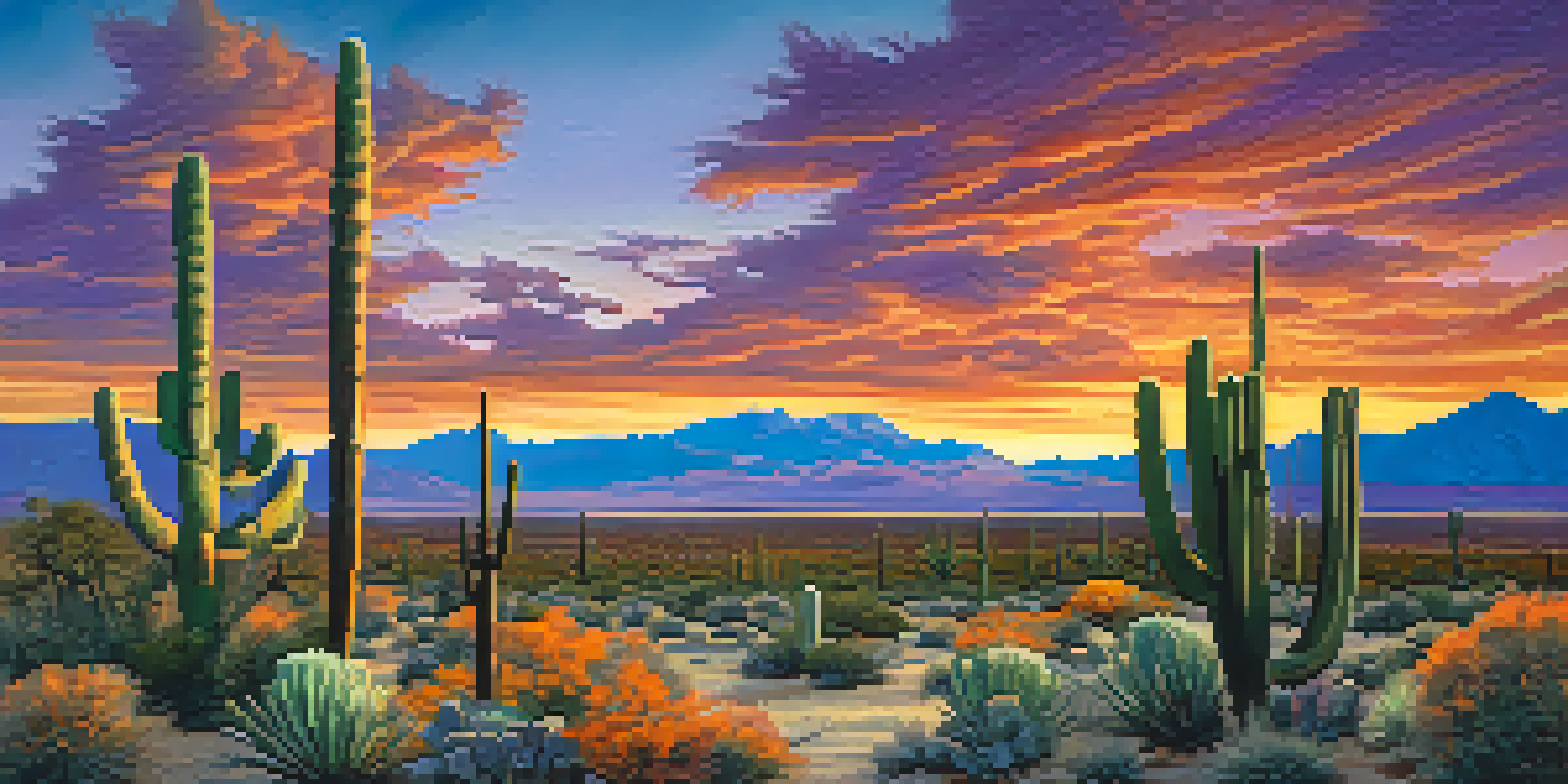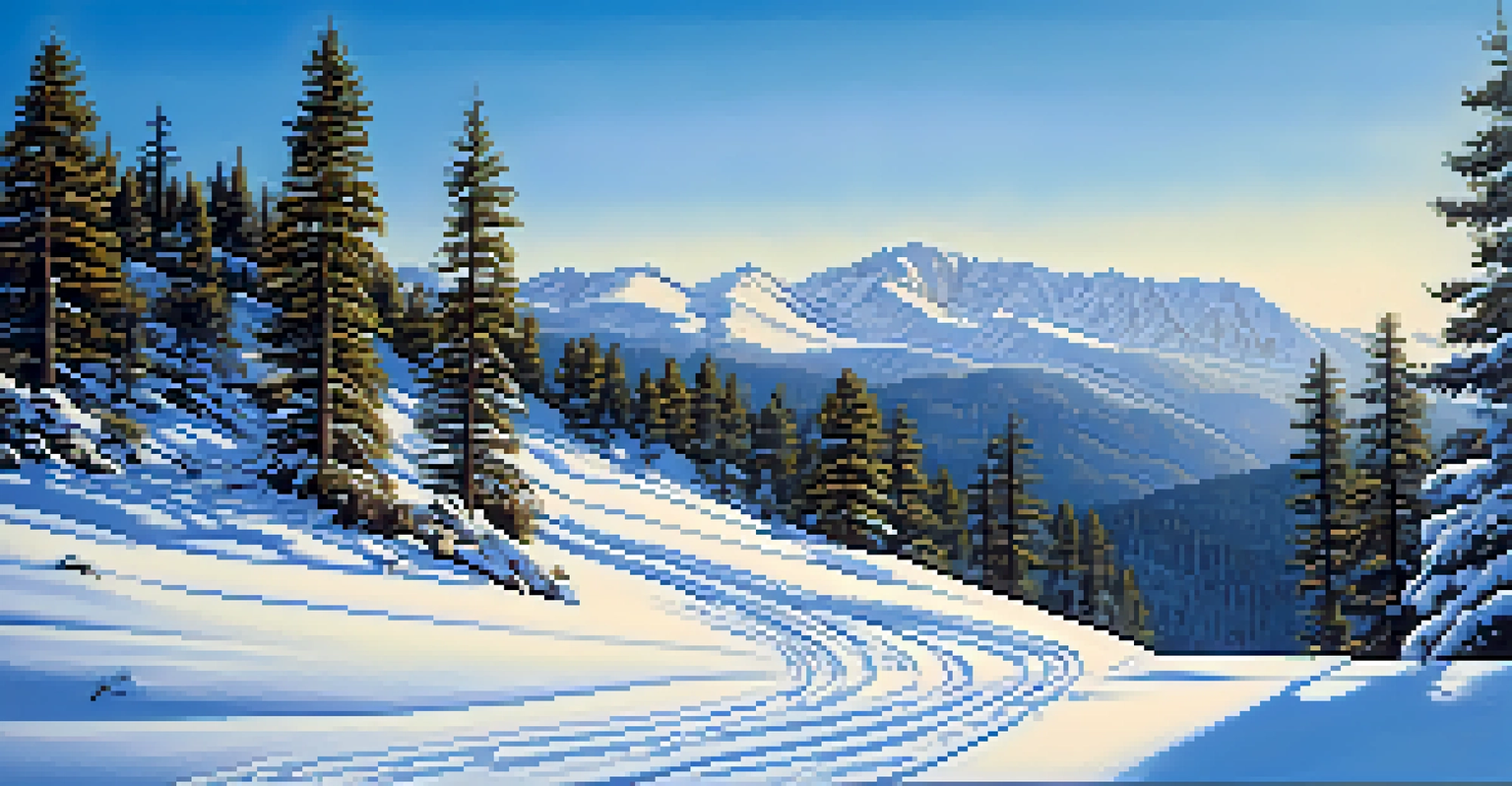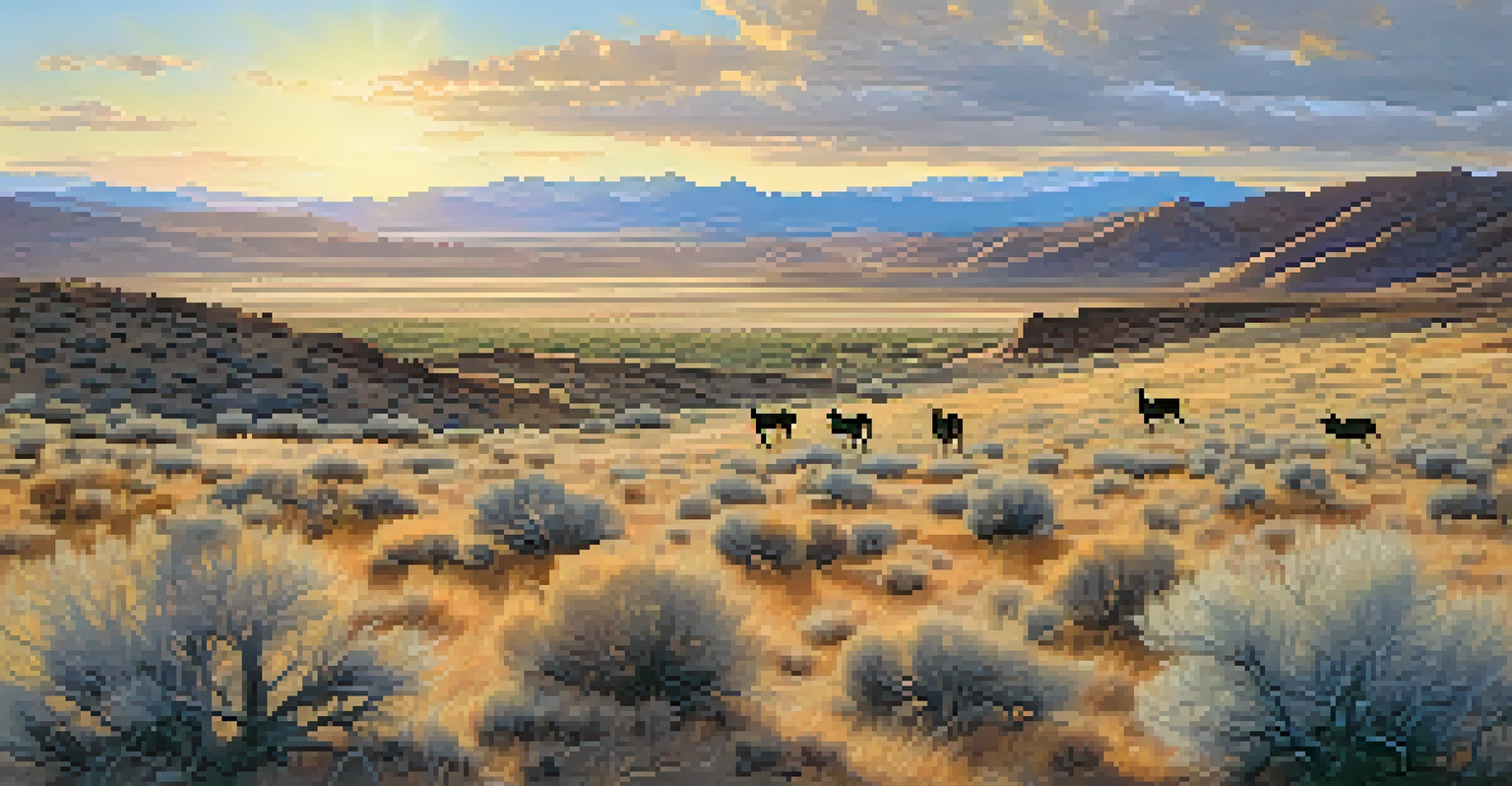Climate Zones in Nevada: Desert, Semi-arid, and More

Understanding Nevada's Climate Zones: An Overview
Nevada is a state of contrasts, boasting a variety of climate zones that shape its unique landscapes. From the arid deserts to semi-arid regions, each area has distinct weather patterns and ecological characteristics. This diversity is largely due to the state's elevation changes and geographical features, making it an interesting case study for climate enthusiasts.
Climate is what we expect, weather is what we get.
The primary climate zones in Nevada include desert, semi-arid, and highland climates, each influencing the local flora and fauna. For instance, the Mojave Desert is known for its scorching temperatures and limited rainfall, while the Great Basin region experiences cooler temperatures and slightly more precipitation. Understanding these zones helps us appreciate the ecological richness of Nevada.
As we delve deeper into each climate zone, we'll explore how they impact daily life, agriculture, and tourism in the state. This knowledge not only enhances our appreciation of Nevada's natural beauty but also informs how we interact with and conserve these environments.
The Desert Climate: Hot and Dry Conditions
The desert climate in Nevada is characterized by extreme temperatures and minimal rainfall, making it a harsh yet fascinating environment. The Mojave Desert, which covers a significant portion of southern Nevada, experiences summer highs frequently exceeding 100°F. This intense heat can be challenging for both residents and wildlife alike.

Despite the harsh conditions, the desert is home to a range of resilient plants and animals. Cacti, creosote bushes, and desert tortoises are just a few examples of life that has adapted to thrive in such an arid climate. These organisms play crucial roles in maintaining the delicate balance of the desert ecosystem.
Diverse Climate Zones in Nevada
Nevada features a range of climate zones, including desert, semi-arid, and highland, each with unique ecological characteristics.
Visitors to Nevada can experience the stunning landscapes of the desert climate through activities like hiking, photography, and stargazing. The clear skies and unique geological formations make for unforgettable adventures, showcasing the beauty of this seemingly inhospitable environment.
Semi-arid Climate: A Transition Zone
The semi-arid climate zone in Nevada serves as a transition between the hot desert and more temperate regions. This area receives slightly more rainfall than the desert, leading to a greater variety of vegetation and wildlife. The semi-arid regions can be found in parts of northern Nevada, where the landscape starts to shift from arid to more fertile ground.
The environment is where we all meet; where we all have a mutual interest; it is the one thing all of us share.
This climate supports a diverse range of plants, including sagebrush, juniper, and various grasses, which provide habitats for numerous animal species. The presence of these plants contributes to the overall biodiversity of the region, making it an essential area for conservation efforts.
For those interested in outdoor activities, the semi-arid climate offers pleasant conditions for hiking, camping, and wildlife watching. With its mix of landscapes and ecosystems, this region is a hidden gem for nature lovers looking to explore Nevada's diverse environments.
Highland Climate: Cooler and Wetter Conditions
In contrast to the desert and semi-arid zones, Nevada's highland climate features cooler temperatures and increased precipitation. Found primarily in the mountainous regions, such as the Sierra Nevada, this climate supports lush forests and diverse wildlife. The cooler temperatures provide a refreshing escape from the heat experienced in lower elevations.
The highland areas receive significant snowfall in the winter months, making them popular destinations for skiing and snowboarding. These regions not only attract winter sports enthusiasts but also play a critical role in Nevada's water supply as melting snow feeds rivers and reservoirs throughout the state.
Impact on Agriculture Practices
The varying climates in Nevada significantly influence agricultural practices, dictating suitable crops and irrigation methods.
Exploring the highland climate offers opportunities for a wide range of outdoor activities, including hiking, fishing, and camping. The breathtaking views and rich biodiversity make these areas a must-visit for anyone looking to experience the natural beauty of Nevada.
Impact of Climate Zones on Agriculture
Nevada's diverse climate zones significantly influence its agricultural practices. In the desert regions, irrigation is essential for growing crops, while semi-arid areas can support a wider range of farming activities with less water. Understanding the specific climate zone is crucial for farmers to determine the best crops and techniques suited for their land.
For example, farmers in the southern desert regions might focus on drought-resistant crops like alfalfa and melons, while those in semi-arid areas could grow a mix of grains and vegetables. The ability to adapt to local climate conditions is key to successful farming in Nevada.
As climate change continues to affect weather patterns, farmers in Nevada must stay informed about evolving conditions to maintain sustainable practices. This adaptability is vital for preserving the agricultural heritage of the state and ensuring food security for future generations.
Tourism and Recreation in Nevada's Climate Zones
Tourism in Nevada is greatly influenced by its varied climate zones, each offering unique recreational opportunities. The desert areas attract visitors looking for adventure in the form of hiking, off-roading, and exploring natural wonders like Red Rock Canyon. This draws thrill-seekers and nature lovers alike to experience the stark beauty of the desert landscape.
In contrast, the highland climate appeals to those seeking cooler temperatures and outdoor winter activities. Ski resorts in the Sierra Nevada, such as Heavenly and Northstar, provide a winter wonderland for snow sports enthusiasts. The blend of climates allows Nevada to cater to a wide range of interests year-round.
Climate Change Challenges
Climate change poses threats to Nevada's ecosystems, affecting water resources, wildlife habitats, and agricultural livelihoods.
Understanding the different climate zones can help tourists plan their visits better, ensuring they make the most of their time in Nevada. Whether it's basking in the desert sun or skiing down snowy slopes, the state's diverse climates offer something for everyone.
Climate Change and Its Effects on Nevada
Climate change poses significant challenges to Nevada's climate zones, potentially altering the delicate balance of its ecosystems. Rising temperatures can exacerbate drought conditions in desert areas, impacting water resources and agriculture. This shift not only affects wildlife habitats but also the livelihoods of those who depend on these environments.
Furthermore, changes in precipitation patterns can lead to increased flooding in some regions while intensifying drought in others. These unpredictable weather events can disrupt tourism, agriculture, and daily life, making it essential for Nevada to develop adaptive strategies.

To address these challenges, conservation efforts and sustainable practices will be crucial. By raising awareness and promoting responsible stewardship of natural resources, Nevada can work towards mitigating the impacts of climate change and preserving its unique climate zones for future generations.